Inujima Art Project
Friday, February 26th, 2010 in: News, Travel
Today I managed to wake up at a reasonable hour and we quickly got under way to meet with Ryan’s friend Kou, an old student from his Nova days. Kou lives near Saidaiji and volunteers at the temple, where the Naked Man Festival has been held annually for the past 500 years. Kou was as advertised, a quiet, laid back guy, though he wasn’t wearing his trademark Doraemon t-shirt. He showed us the temple grounds, eerily empty except for workers setting up barriers to protect the ancient buildings from the throngs of people that will be filling the courtyard for the festival. In just over 24 hours, this part of town is going to be choked with naked men and onlookers.
 We took a bus to the shore to take the ferry to Inujima, detouring a little to check out the beach. Some sweet old ladies asked us where we were heading, and told us to get the lead out. We thanked them and ran to the ferry, where we had only a couple minutes to buy our tickets and board the small ship, taking a seat next to a few people and a laundry machine bound for one of the island’s inhabitants. One of the other passengers turned out to be a friend of Shinji’s (the photographer from the day before), and we learned that he owns a coffee house that Ryan used to frequent when he lived in the area. It’s a small world, 世間は狭いね。
We took a bus to the shore to take the ferry to Inujima, detouring a little to check out the beach. Some sweet old ladies asked us where we were heading, and told us to get the lead out. We thanked them and ran to the ferry, where we had only a couple minutes to buy our tickets and board the small ship, taking a seat next to a few people and a laundry machine bound for one of the island’s inhabitants. One of the other passengers turned out to be a friend of Shinji’s (the photographer from the day before), and we learned that he owns a coffee house that Ryan used to frequent when he lived in the area. It’s a small world, 世間は狭いね。
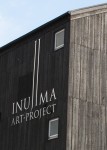 The island itself was a small slice of granite defiantly jutting out of the inland sea, battered by years of typhoons, and carved up for use in castle foundations. Before the war it was used for copper refinery, and a lot of the old factory buildings were made from Karami-renga, カラミ煉瓦, bricks made from the slag left over from the smelting process. The dense bricks were pockmarked and scarred from the mineral imperfections that characterized them; each stone weighed over 40 pounds.
The island itself was a small slice of granite defiantly jutting out of the inland sea, battered by years of typhoons, and carved up for use in castle foundations. Before the war it was used for copper refinery, and a lot of the old factory buildings were made from Karami-renga, カラミ煉瓦, bricks made from the slag left over from the smelting process. The dense bricks were pockmarked and scarred from the mineral imperfections that characterized them; each stone weighed over 40 pounds. 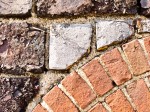 Several chimney stacks, relics from the refinery and rare pre-modern electric plant, sprung from the ground, some looking as good as new, others had suffered greatly over time, and were on the brink of collapse. During the war, the island was used as a munitions plant, and was bombed by the Americans. Afterwards, the Japanese tried to tear down some of the chimneys to use the building materials elsewhere, but found they were too sturdily built to easily harvest for materials. At its apex, three to five thousand people lived on the island; nowadays, the population is 44. In recent years, The island’s been rehabilitated in the form of a massive art project by an architect (Hiroshi Sambuchi) and an artist (Yukinori Yanagi). The main point of the structure was to utilize the giant chimney to help create a controlled environment by directing airflow between a hot and cold wing of the building. We walked into a dark winding corridor with mirrors set up to make it seem straight. At the start of the path was a 3D sun, symbolic of the power of nature. At the other end of the path was a final mirror turned upwards to the sky. Don’t tell anyone I snuck a few photos…
Several chimney stacks, relics from the refinery and rare pre-modern electric plant, sprung from the ground, some looking as good as new, others had suffered greatly over time, and were on the brink of collapse. During the war, the island was used as a munitions plant, and was bombed by the Americans. Afterwards, the Japanese tried to tear down some of the chimneys to use the building materials elsewhere, but found they were too sturdily built to easily harvest for materials. At its apex, three to five thousand people lived on the island; nowadays, the population is 44. In recent years, The island’s been rehabilitated in the form of a massive art project by an architect (Hiroshi Sambuchi) and an artist (Yukinori Yanagi). The main point of the structure was to utilize the giant chimney to help create a controlled environment by directing airflow between a hot and cold wing of the building. We walked into a dark winding corridor with mirrors set up to make it seem straight. At the start of the path was a 3D sun, symbolic of the power of nature. At the other end of the path was a final mirror turned upwards to the sky. Don’t tell anyone I snuck a few photos…
At the other end of the structure was another art installation, a “floating room” inspired by the novelist Yukio Mishima. Everything was suspended from the ceiling, over a slab of stone cut out of the granite quarry on the island. Just outside of this was a room with a set of opposing mirrors upon which lasers were used to create infinitely recursive messages. It was a very cool effect. The final installation was in the “hot room,” a glass structure that was at least 10 degrees celsius warmer than the rest of the building. During the summer, it was said to reach 80 degrees if the proper doors weren’t opened to regulate the temperature. The art installation consisted of gilded sentences taken from Mishima’s work, draped around an old war chest. Since I haven’t had a chance to read Yukio Mishima, I’ll have to refrain from commenting on the art; maybe if I get a chance I’ll catch up on my reading and I’ll be able to speak more about it.
Attached to the “hot room” was a modern cafe, but our ride for Naoshima was leaving in less than 10 minutes.

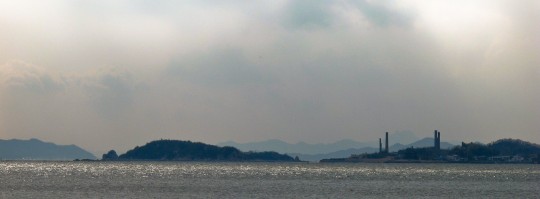
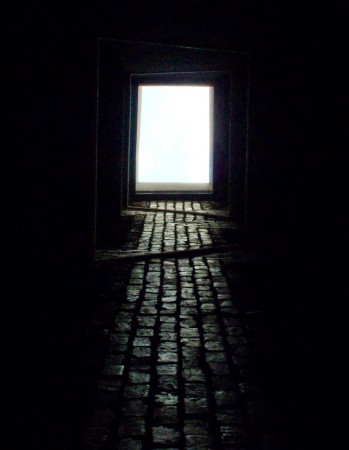
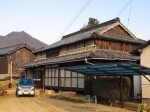
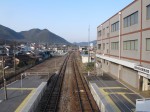

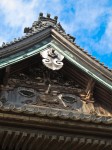
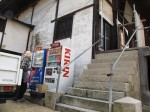
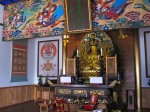

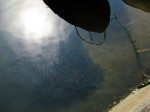

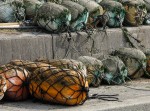






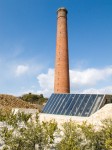
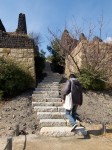
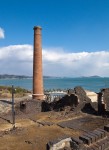

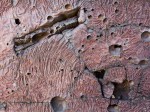
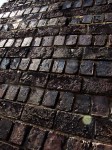
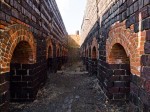


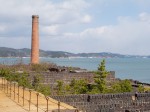
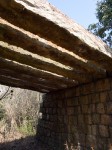
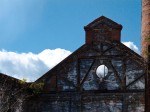


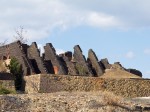
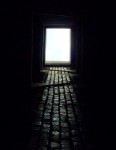
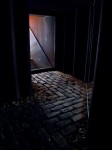








Leave a Reply